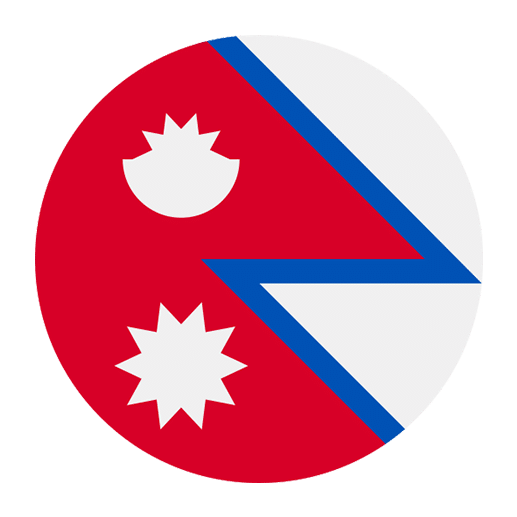Nepali, the official language of Nepal, is a rich and fascinating language spoken by millions. Understanding the structure of Nepali words can significantly aid language learners in their quest for proficiency. This article delves into the intricacies of Nepali word formation, exploring the phonetics, morphology, syntax, and semantics to provide a comprehensive guide for English speakers.
Phonetics and Phonology
Phonetics and phonology are the foundational elements of any language, including Nepali. These fields study how sounds are produced and perceived, and how they interact within the language system.
Vowels and Consonants
Nepali has a distinct set of vowels and consonants. The vowel system consists of 11 vowels, categorized as short and long. Short vowels include अ /a/, इ /i/, उ /u/, ए /e/, and ओ /o/. The corresponding long vowels are आ /aa/, ई /ii/, ऊ /uu/, ऐ /ai/, औ /au/, and ऋ /ri/.
The consonant system is more extensive, with 36 consonants that include stops, nasals, fricatives, affricates, and approximants. Some of the key consonants are क /k/, ख /kh/, ग /g/, घ /gh/, ङ /ng/, च /ch/, छ /chh/, ज /j/, झ /jh/, ञ /ny/, ट /t/, ठ /th/, ड /d/, ढ /dh/, ण /n/, त /t/, थ /th/, द /d/, ध /dh/, न /n/, प /p/, फ /ph/, ब /b/, भ /bh/, म /m/, य /y/, र /r/, ल /l/, व /v/, श /sh/, ष /shh/, स /s/, ह /h/, क्ष /ksh/, त्र /tr/, and ज्ञ /gy/.
Morphology
Morphology, the study of word formation and structure, is crucial in understanding how Nepali words are constructed.
Inflectional Morphology
Inflectional morphology deals with the modification of words to express different grammatical categories such as tense, mood, voice, aspect, person, number, gender, and case. In Nepali, verbs inflect to indicate tense, aspect, and mood. For example:
– खाना /khana/ (to eat)
– खायो /khayo/ (ate)
– खाइरहेछ /khairahecha/ (is eating)
– खानेछ /khaanecha/ (will eat)
Nouns inflect to show number (singular/plural) and case (nominative, accusative, genitive, dative, etc.). For instance:
– किताब /kitab/ (book)
– किताबहरू /kitabharu/ (books)
– किताबको /kitabko/ (of the book)
Derivational Morphology
Derivational morphology involves the creation of new words by adding prefixes, suffixes, or other morphological processes. Nepali utilizes various affixes to form new words. For example:
– Adding the prefix “अ-” /a-/ to the word “शिक्षित” /shikshit/ (educated) forms “अशिक्षित” /ashikshit/ (uneducated).
– Adding the suffix “-ता” /-ta/ to “स्वतन्त्र” /swatantra/ (independent) forms “स्वतन्त्रता” /swatantrata/ (independence).
Syntax
Syntax, the study of sentence structure, is essential for constructing meaningful sentences in Nepali.
Basic Sentence Structure
Nepali follows a Subject-Object-Verb (SOV) word order, which differs from the Subject-Verb-Object (SVO) structure of English. For example:
– म किताब पढ्छु /ma kitab padchu/ (I read a book)
– म /ma/ (I) – subject
– किताब /kitab/ (book) – object
– पढ्छु /padchu/ (read) – verb
Modifiers and Word Order
Modifiers such as adjectives and adverbs usually precede the noun or verb they modify. For example:
– ठूलो घर /thulo ghar/ (big house)
– ठूलो /thulo/ (big) – adjective
– घर /ghar/ (house) – noun
– छिटो दौड /chhito daud/ (run fast)
– छिटो /chhito/ (fast) – adverb
– दौड /daud/ (run) – verb
Semantics
Semantics, the study of meaning in language, is key to understanding how words and sentences convey meaning in Nepali.
Polysemy and Homonymy
Nepali, like many languages, has words with multiple meanings (polysemy) and words that sound the same but have different meanings (homonymy). For example:
– The word “कला” /kala/ can mean both “art” and “trick.”
– The word “बाँध” /baandh/ can mean both “dam” and “tied.”
Idiomatic Expressions
Understanding idiomatic expressions is crucial for mastering any language. Nepali has many idioms that may not translate directly into English. For example:
– हात धोएर लाग्नु /haat dhoera laagnu/ (literally “to wash hands and start”) means to be very determined to accomplish something.
Word Formation Processes
Nepali employs various word formation processes that are important for language learners to understand.
Compounding
Compounding is the process of combining two or more words to form a new word. In Nepali, compounds can be formed by combining nouns, adjectives, verbs, etc. For example:
– Combining “पानी” /pani/ (water) and “परीक्षा” /pariksha/ (test) forms “पानीपरीक्षा” /panipariksha/ (water test).
Reduplication
Reduplication involves repeating a word or part of a word to express plurality, intensity, or other grammatical functions. For example:
– “हिँड” /hidd/ (walk) becomes “हिँडहिँड” /hiddhidd/ (walk repeatedly).
Lexical Borrowing
Nepali, like many languages, has borrowed words from other languages, especially Sanskrit, Hindi, and English. Understanding these borrowed words can help learners expand their vocabulary.
Sanskrit Borrowings
Many Nepali words are derived from Sanskrit, the classical language of India. For example:
– “ज्ञान” /gyan/ (knowledge)
– “शक्ति” /shakti/ (power)
Hindi Borrowings
Due to geographical proximity and cultural exchanges, Nepali has borrowed numerous words from Hindi. For example:
– “समस्या” /samasya/ (problem)
– “समाचार” /samachar/ (news)
English Borrowings
With the influence of globalization, many English words have entered the Nepali lexicon, especially in technology, business, and education. For example:
– “कमप्युटर” /kampyutar/ (computer)
– “मोबाइल” /mobail/ (mobile)
Register and Style
Understanding different registers and styles in Nepali is essential for effective communication in various contexts.
Formal vs. Informal
Nepali, like many languages, has different levels of formality. Formal language is used in official, academic, and respectful contexts, while informal language is used among friends and family. For example:
– Formal: तपाईलाई कस्तो छ? /tapaailai kasto cha?/ (How are you?)
– Informal: तँलाई कस्तो छ? /taalai kasto cha?/ (How are you?)
Honorifics
Nepali uses honorifics to show respect and politeness. These are particularly important when addressing elders or people in authority. For example:
– Adding “जी” /ji/ after a name shows respect, as in “रामजी” /Ramji/ (Mr. Ram).
Pragmatics
Pragmatics, the study of how context influences meaning, is crucial for understanding Nepali in real-life situations.
Contextual Meaning
The meaning of words and sentences in Nepali can change depending on the context. For example, the word “कहाँ” /kaha/ can mean both “where” and “somewhere” depending on its usage.
– कहाँ जाँदै हुनुहुन्छ? /kaha jadai hunuhuncha?/ (Where are you going?)
– उहाँ कहाँ हुनुहुन्छ /uha kaha hunuhuncha/ (He is somewhere.)
Speech Acts
Speech acts are actions performed via utterances, such as requesting, apologizing, or thanking. Understanding how to perform these acts in Nepali is essential for effective communication. For example:
– Requesting: “कृपया मलाई मद्दत गर्नुहोस्” /kripaya malai maddat garnuhos/ (Please help me)
– Apologizing: “माफ गर्नुहोस्” /maaf garnuhos/ (I am sorry)
Common Challenges for English Speakers
Learning Nepali can present specific challenges for English speakers. Recognizing these challenges can help learners address them more effectively.
Pronunciation
The pronunciation of Nepali sounds, especially retroflex consonants like ट /t/ and ढ /dh/, can be difficult for English speakers. Practicing with native speakers and using phonetic tools can help.
Word Order
The SOV word order in Nepali can be confusing for English speakers accustomed to SVO structure. Consistent practice and exposure to Nepali sentences can aid in mastering this difference.
Honorifics and Formality Levels
Navigating the complex system of honorifics and formality levels can be challenging. Understanding the cultural context and practicing with native speakers can improve proficiency in this area.
Vocabulary
The extensive borrowing from Sanskrit, Hindi, and English can make Nepali vocabulary daunting. Using flashcards, vocabulary lists, and regular reading can help expand one’s lexicon.
Conclusion
Understanding the structure of Nepali words is a multifaceted endeavor that encompasses phonetics, morphology, syntax, semantics, and pragmatics. For English speakers, learning Nepali requires patience, practice, and a deep appreciation for the language’s unique characteristics. By examining the various components of Nepali word formation and sentence structure, learners can develop a more nuanced and effective approach to mastering this beautiful language.

